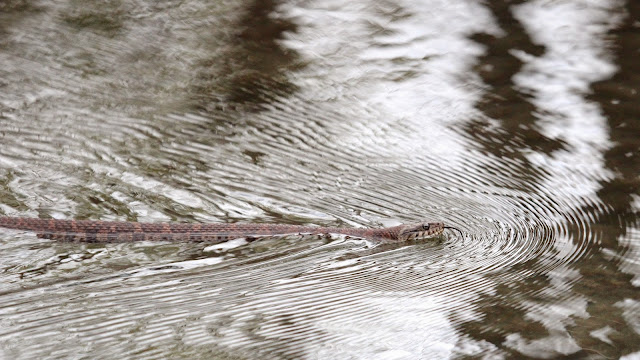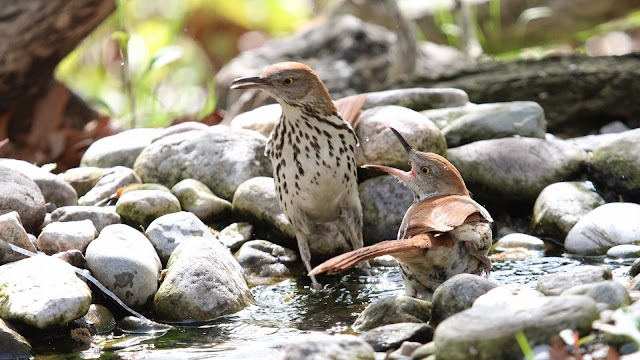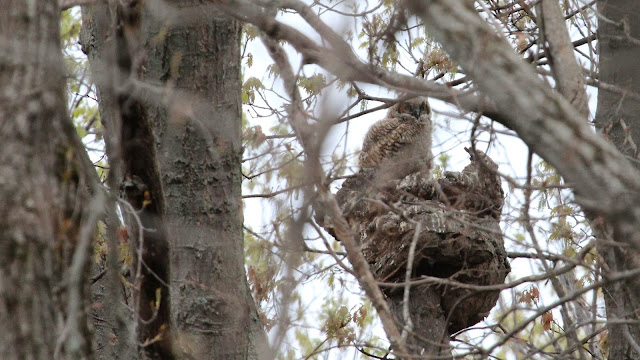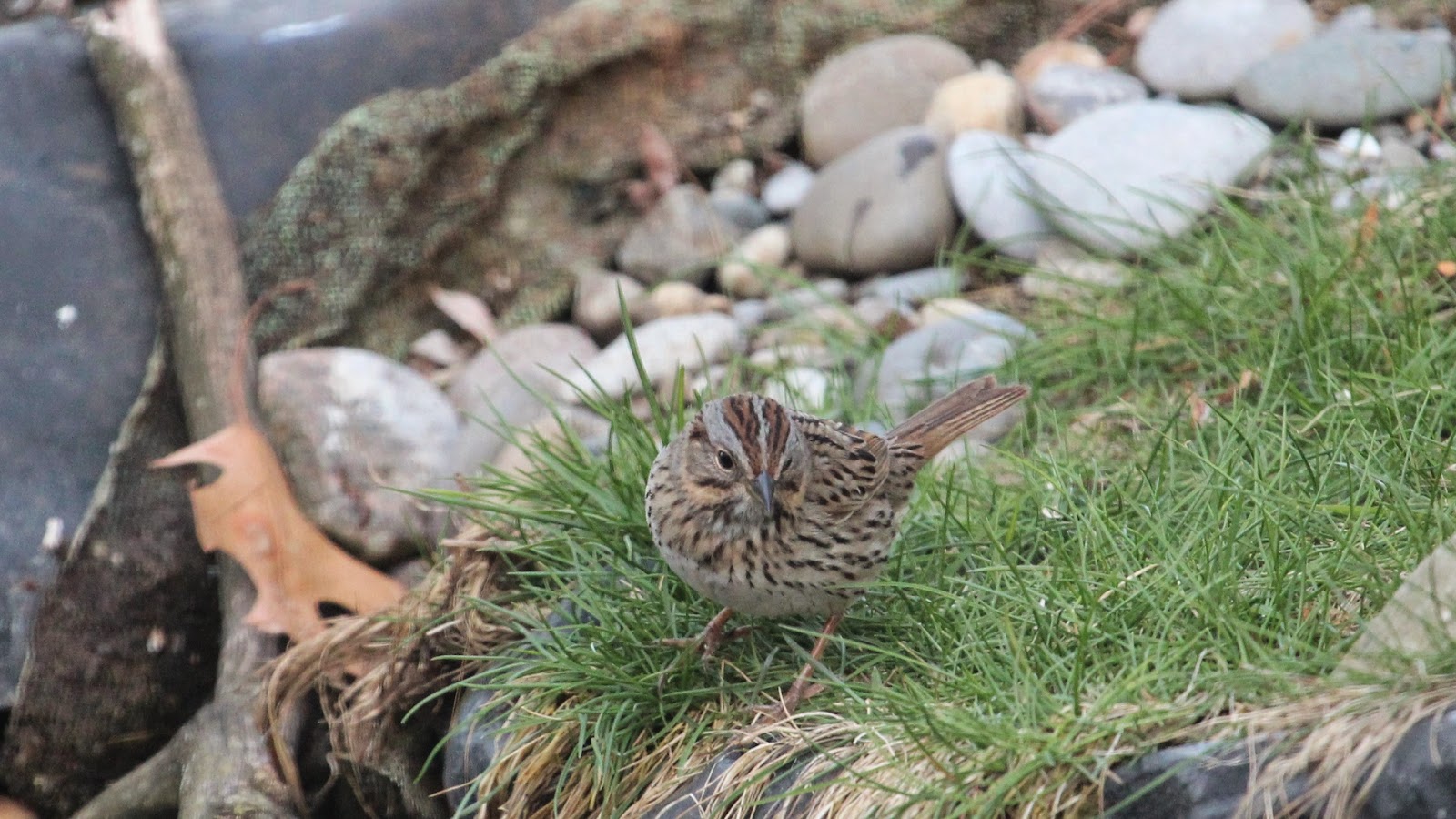Just when you thought it was safe to go back in the water...

Forget snakes on a plane, there are snakes in the water. We were out on the pontoon looking for shorebirds when Anne spotted something swimming towrds the boat. Initial reaction was that was the fastest turtle we had ever seen. As it came closer it turned into a snake. It would swim on the surface, dive and resurface. Rondeau's own little Loch Ness monster. It's hard to tell but it may be a eastern fox snake. We have seen them in the water before. If you can help with the id I would appreciate. It could also be a northern water snake. Assuming it is an eastern fox it is - Pantherophis gloydi













